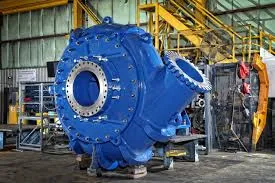Mongolian
- Afrikaans
- Albanian
- Amharic
- Arabic
- Armenian
- Azerbaijani
- Basque
- Belarusian
- Bengali
- Bosnian
- Bulgarian
- Catalan
- Cebuano
- Corsican
- Croatian
- Czech
- Danish
- Dutch
- English
- Esperanto
- Estonian
- Finnish
- French
- Frisian
- Galician
- Georgian
- German
- Greek
- Gujarati
- Haitian Creole
- hausa
- hawaiian
- Hebrew
- Hindi
- Miao
- Hungarian
- Icelandic
- igbo
- Indonesian
- irish
- Italian
- Japanese
- Javanese
- Kannada
- kazakh
- Khmer
- Rwandese
- Korean
- Kurdish
- Kyrgyz
- Lao
- Latin
- Latvian
- Lithuanian
- Luxembourgish
- Macedonian
- Malgashi
- Malay
- Malayalam
- Maltese
- Maori
- Marathi
- Mongolian
- Myanmar
- Nepali
- Norwegian
- Norwegian
- Occitan
- Pashto
- Persian
- Polish
- Portuguese
- Punjabi
- Romanian
- Russian
- Samoan
- Scottish Gaelic
- Serbian
- Sesotho
- Shona
- Sindhi
- Sinhala
- Slovak
- Slovenian
- Somali
- Spanish
- Sundanese
- Swahili
- Swedish
- Tagalog
- Tajik
- Tamil
- Tatar
- Telugu
- Thai
- Turkish
- Turkmen
- Ukrainian
- Urdu
- Uighur
- Uzbek
- Vietnamese
- Welsh
- Bantu
- Yiddish
- Yoruba
- Zulu
Telephone: +86 13120555503
Email: frank@cypump.com
8 сар . 19, 2024 13:04 Back to list
Home Sewer Pump Station Solutions for Efficient Wastewater Management and Residential Comfort
Home Sewer Pump Stations A Comprehensive Guide
In the realm of residential plumbing, one often overlooked yet essential component is the home sewer pump station. This ingenuity of modern engineering plays a critical role in managing wastewater effectively, particularly in areas where gravity drainage is insufficient.
What is a Home Sewer Pump Station?
A home sewer pump station is a system designed to transport wastewater from a home to the main sewer line or septic system. It becomes particularly vital in situations where a property is situated below the elevation of the municipal sewer line, making gravity drainage impractical. In such cases, a pump station is installed to lift the sewage and direct it to the appropriate disposal system.
Components of a Sewer Pump Station
A typical home sewer pump station includes several key components
1. Pump The heart of the station, it actively moves wastewater through pipes to its designated location. Submersible pumps are commonly used because they are designed to operate underwater and can handle solid waste effectively.
2. Hold Tank This tank collects wastewater from the home until it reaches a certain level. At this point, the pump is activated to propel the water to the main sewage line.
3. Float Switch This device monitors the water level in the hold tank. When the water level rises to a predetermined point, the float switch triggers the pump to start.
4. Discharge Pipe This pipe carries the pumped wastewater away from the hold tank to the sewer line or septic system.
5. Check Valve Prevents backflow into the hold tank once the wastewater has been sent out, ensuring a one-way flow.
Why Install a Sewer Pump Station?
home sewer pump station

There are several reasons why a homeowner may need a sewer pump station
- Topographical Concerns For properties located in low-lying areas or at the bottom of a slope, gravity waste removal is not possible. A pump station is essential in these situations.
- Renovations and Additions When a home undergoes significant renovations or when additional bathrooms are added, the existing plumbing system may not suffice. A sewer pump station can be integrated to accommodate increased demand.
- Septic System Efficiency For homes with septic systems, a pump station can help ensure that the effluent is efficiently transported to the drain field, especially if the field is situated higher than the house.
Maintenance Considerations
While sewer pump stations are generally low-maintenance, regular checks are crucial for optimal operation. Homeowners should routinely inspect the following
- Pump Operation Ensuring that the pump activates and deactivates as intended.
- Float Switch Functionality Confirming that the float switch is not stuck and can effectively measure water levels.
- Tank Condition Monitoring for any signs of wear or damage that could lead to leaks.
- Clogs Regularly checking for clogs in the discharge pipe or pump, particularly if there are signs of backups in the plumbing system.
Conclusion
A home sewer pump station may not be the most glamorous aspect of a residential system, but it is undoubtedly one of the most important. Properly functioning pump stations ensure that wastewater is handled efficiently and safely, protecting both the home and the environment. Understanding how these systems work and committing to regular maintenance can provide homeowners peace of mind, knowing that their drainage needs are met, even in challenging topographical conditions. As with any part of the home, knowledge and proactive management are key to ensuring longevity and efficiency in your plumbing system.
-
Horizontal Split Case Pump with GPT-4 Turbo | High Efficiency
NewsAug.01,2025
-
ISG Series Pipeline Pump - Chi Yuan Pumps | High Efficiency, Durable Design
NewsAug.01,2025
-
Advanced Flue Gas Desulfurization Pump with GPT-4 Turbo | Durable & Efficient
NewsJul.31,2025
-
ISG Series Vertical Pipeline Pump - Chi Yuan Pumps | Advanced Hydraulic Design&Durable Construction
NewsJul.31,2025
-
ISG Series Vertical Pipeline Pump - Chi Yuan Pumps | Energy Efficient & Low Noise
NewsJul.31,2025
-
pipeline pump - Chi Yuan Pumps Co., LTD.|High Efficiency&Low Noise
NewsJul.31,2025










